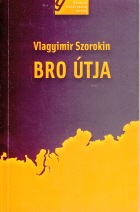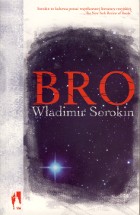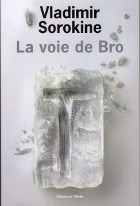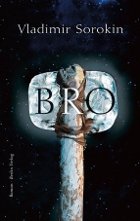Vladimir Sorokin
Bro
Proposal
Published by
- Zakharov Publishers, Moscow
- Éditions de l’Olivier, Paris
- Wydawnictwo W.A.B., Warsaw
- Gondolat Kiadó, Budapest
- New York Review of Books, New York
- Berlin Verlag, Berlin
- Alfaguara, Madrid
Russian critics are reporting that, if after his novel „The Ice,“ any doubt existed that Vladimir Sorokin had really said farewell to Conceptualism, then, following the appearance of his new novel “ Bro,“ those doubts have been swept aside.
„Sorokin has changed from a misanthrope and pessimist who takes satisfaction in black humor, into a serious thinker who is trying to overcome the anthropological crisis of the twentieth century.“ (Afischa)
„In his new novel, Sorokin is exactly the way he is on the inside. Despite all the ice, the novel is permeated with love.“ (Topos)
Vladimir Sorokin has demonstrated that he can get along without feces, vomit and violence. There are lots of really worse things in the modern-day world. The writer once was considered an experimenter and destroyer of myths has taken up story-telling and has begun to create his own myth. „‚Bro‘ shows the reader a new Sorokin. The enthusiastic young adherants to „Moving Together“ [the so-called pro-Putin-youth, who have publicly destroyed Sorokin’s books] will not encounter anything here that they can find fault with. That will take a top-of-the-line ideologist. The Art, Literature and Philosophy of the twenty-first century are immediately recognizable, and, in the ‚New Russia,‘ they will doubtlessly be forbidden.“ (Moskovskie novosti)
„The Path of the Bro“ is an autonomous work, but, at the same time, it is a „Prequel“ to the story of Sorokin’s novel „The Ice.“ The story of the idyllic pre-Revolutionary childhood of Alexander Snegirov [his name means ’snow‘] in a well-off Russian family is told in a classical style like that in Nabokov’s works or in Goncharov’s „Oblomov.“ There is, however, one thing that makes Snegirov’s life special: a recurring dream. He is standing at the foot of a mountain, the peaks of which give off such an intense light that he is eventually dissolved in this light and disappears.
Snegirov’s sheltered childhood ends with the death of his family during the turmoil of the Revolution. The ten-year-old boy is forced into a journey, on which Providence seems to guide and protect him. It brings him to Petrograd, where he lives with some relatives in poverty and loneliness. At the end of the 1920s, Snegirov is expelled from the university, and, by the accident of the fact that he was born on the same day in 1908 as the Tungus meteorite came down in Siberia, becomes a member of an expedition that is going to the impact site. All the members of the expedition die, but Snegirov survives and, face to face with a gigantic block of ice, remembers his real name: „Bro.“ He becomes aware that he is from another world and that his mission is to gather together all the members of the „Ice Brotherhood“ who have taken on human form and are spread all over the world. The cosmic error that resulted in the development of mankind can only be corrected, and world harmony restored, when all 23,000 of the creature of light are reunited.
This is where the adventurous search for the people of light begins. Time is of the essence, however, because a human life short, and when one of those who has already awoken dies, his new mortal coil has to be found. This gives the story a sense of speed as it courses through history like a time-lapse film: the Stalinist purges, Hitler, Leni Riefenstahl, the war between the land of ice and the land of order …





